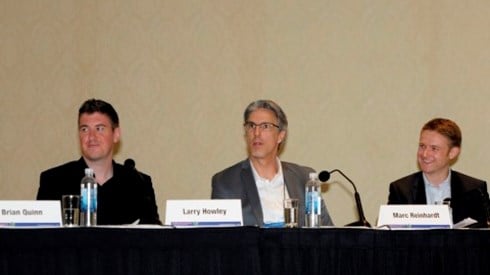Emerging Risks in Captives Ripe for Continued Expansion

May 23, 2018

Marsh's 2018 Captive Landscape Report reveals that captive insurance vehicles are rapidly growing in popularity as risk managers seek alternative ways to finance emerging risks their organizations now face. The report says that, over the past 50 years, captives have been in a "near-continuous expansion."
The report examines 1,100 captives managed by Marsh Captive Solutions globally. The report found that cumulative growth in the number of Marsh-managed captives writing cyber-liability rose by 240 percent from 2012 to 2017, while, in the same period, the number of captives insuring employee benefits across multiple geographies grew by 550 percent.
Even with this growth, at the time of the survey, close to 60 percent of respondents said that they would not consider funding employee benefits in their captive. However, Marsh states in the report that it believes "interest will continue to increase in this area as rising medical costs globally remain a significant expense for organizations."
Marsh also saw an 83 percent increase from 2012 to 2017 in the number of captives writing terrorism coverage backed by the Terrorism Risk Insurance Program Reauthorization Act (TRIPRA) of 2015. Many organizations are examining their captives to see if they can take advantage of TRIPRA, which can also be used to cover cyber-terrorism perils in the United States.
Marsh-managed captives are primarily structured as single-parent captives with more than 75 percent in this structure.
According to the report, 60 percent of captive owners surveyed maintain their captive as a formal funding vehicle to insure risks that the parent company has decided to self-assume, and 42 percent said it was to provide access to the reinsurance market. The report also found that, "although captives can bring tax efficiency, a minority of Marsh-managed captives view it as a key value driver."
More than 60 percent of captive insurers surveyed said that, to qualify as an insurance entity, they diversify their risk through the brother/sister approach, where risk distribution is achieved "across subsidiary operations in a parent company's economic family." Around 20 percent write third-party risk, and the remaining 20 percent use a combination of the two approaches.
The report also noted strong year-over-year growth in captives in the Asia-Pacific region since 2012. Last year, Marsh recorded a 24 percent increase in the number of Marsh-managed captives in Asia-Pacific, largely driven by parent companies based in Japan, China, Hong Kong, and Singapore.
Ellen Charnley, president, Marsh Captive Solutions, commented, "As the global risk landscape becomes more complex, organizations are increasingly using captives to help accelerate their corporate objectives, reduce volatility, protect human capital, and boost financial certainty.
"Captives offer unrivaled flexibility in financing emerging and high-severity risks, such as cyber risks, terrorism, and employee benefits. We expect this growth to continue, as more organizations adopt innovative new ways of placing captives at the core of their risk management strategies."
May 23, 2018


